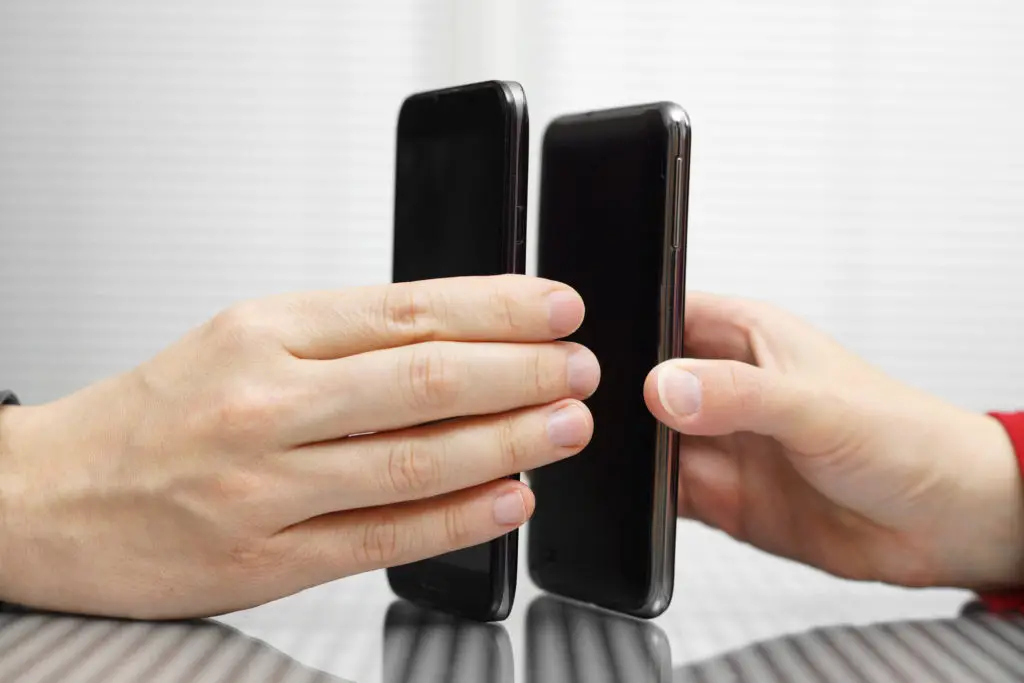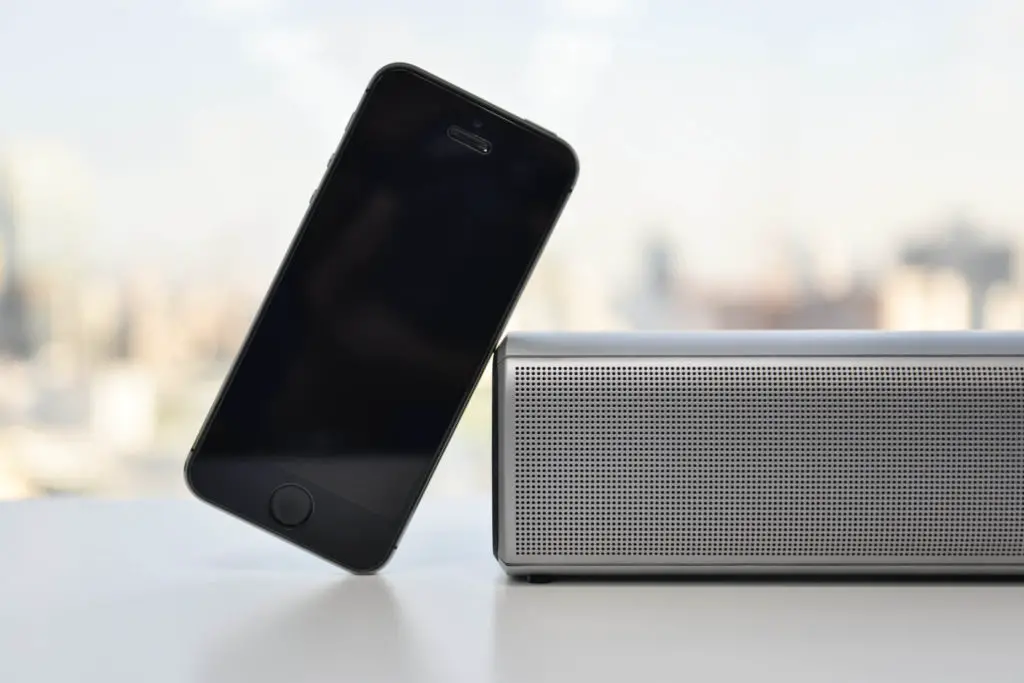Wireless connections are more desirable as consumers cut the cord and use fewer cables to connect devices. NFC and Bluetooth are prominent technologies in this space, with similar features. So, what's the difference between NFC & Bluetooth, and how can they work together?
Near-Field Communication (NFC) and Bluetooth are two different technologies for transferring data between nearby devices. NFC is less expensive and operates with less power consumption. Bluetooth has a broader set of capabilities and uses. The two short-range technologies can solve various problems.
While these two radio technologies connect devices over a short range, allowing reliable communication, that is where the similarity ends. The two work in entirely different ways. Both have their advantages and disadvantages compared to one another. Working together, they create an even better user experience. Let's first look at what the two technologies are:

What Is Bluetooth?
You may already be familiar with it, but Bluetooth is used for wireless communication and connections over short distances.
Though the technology was developed in 1989 by Ericsson, a Swedish telecommunications company, the name "Bluetooth" came up much later in 1997 when Jim Kardach proposed the name. "Bluetooth" was an ancient Viking king who unified Norway and Denmark.
Bluetooth utilizes radio frequencies in the 2.400MHz to 2483.5MHz electromagnetic range. This spectrum band was chosen to balance reasonable data transfer rates and operating distance.
Initially, it was designed for connecting computers to wireless headsets, but it has evolved over the years and now has hundreds of applications, including some you might not have heard of:
- Sending files to different mobile devices
- Connecting Bluetooth devices such as video game controllers and smartwatches
- Use in Phone as a Key (PaaK), a new application allowing owners to use their smartphones as a car key.
One of the downsides of Bluetooth is that two (or more wireless devices) must first pair before data transmission can occur. This is where near-field communication can assist.
What Is Near-Field Communication? (NFC)
Near Field Communication, or NFC, is a wireless technology similar to Bluetooth. It is used for data transmission over short distances.
Near Field Communication technology was first approved as an ISO standard in 2003. Then the NFC forum was formed later, in 2004, by Sony, Philips, and Nokia. The forum, which promotes NFC and NFC device compliance, now has over 175 members, including banks that issue credit cards, mobile device makers, and wireless carriers.
Based on the larger Radio Frequency Identification (RFID) standard, NFC utilizes the 13.56 MHz RFID frequency band and has a transfer rate between 106 to 424 kbits (kilobits per second).
It works at pretty close distances, and in some cases, physical touch is required for data transmission to occur.
There are no requirements for the pairing process before communication. Most iOS devices and Android devices come with NFC. Even some wearable devices like smartwatches and fitness trackers also include the technology.
Uses of NFC include:
- Wireless charging: Newer NFC hardware enables wireless charging. This functionality brings the convenience of data transfer and charging in one connection.
- Payment terminals / contactless credit card payments like Google Pay, Samsung Pay, and Apple Pay all use the NFC chip on your smartphone for contactless payments.
- Opening car and entry doors in office buildings
- Event ticketing
- Small file transfers peer-to-peer: Android Beam
- Home automation through programmable passive tags

NFC vs. Bluetooth: The Key Differences
| NFC | Bluetooth | |
|---|---|---|
| Pairing required | No authentication needed | Yes. Requires manual pairing of devices, sometimes including a PIN exchange |
| Two-way communication | Yes; 3 modes | Yes |
| Data transfer speed | 0.424 Mbps | 1.0-2.1 Mbps |
| Communication distance | Less than 20 centimeters | Up to 50 meters |
| Communication security | None | Available depending on profile/function |
| Power requirements | 15 milliamps | Varies by class; Bluetooth Low Energy 15 milliamps |
| Special software required | No | Yes; Driver per profile/feature to be used |
| Wireless charging capable | Yes (slower than other wireless charging solutions) | No |
| Costs of the chip | $0.05-0.25 | $1-5 |
| Radiofrequency | 13.56 MHz | 2.4–2.5 GHz |
| Simultaneous connectivity | Only 2 devices at a time | Up to 8 devices simultaneous |
| Data storage | Can store between 96 and 8,192 bytes, enough for a web address, contact info, a short email or text message, pairing information | None, only transfers data |
Bluetooth has a lot of advantages over NFC, but it can fill the gaps in the other's capabilities. The two technologies can work together in various use cases.

Applications For NFC + Bluetooth Technologies Together
Here are some new and novel examples where NFC and Bluetooth bring users closer to a fully-wireless experience.
Better Shopper Experience
According to the NFC Forum, when Bluetooth and NFC beacons are used together, they allow brands and retailers to engage throughout the phases of a shopping journey. The two technologies complement each other, enabling pull- and push-based customer interactions.
For instance, before making a purchase, a beacon can automatically activate a shop or store and channel content towards consumers who have a pre-installed venue or shop app. Also, when a shopper wants detailed information about particular services or products, they can use NFC for direct interaction with packages, products, and services.
Then once a shopper is in the store, NFC cards can be used to shop flawlessly without worrying about checkout.
Immersive Gaming
NFC powered the wildly popular Activision game, Skylanders. When scanned by the NFC Portal of Power, the individual collectible figurines unlock in-game playable characters.
The game was available primarily on gaming consoles, but later, Activision released Skylanders Trap Team's Tablet Starter Pack. The set included a Bluetooth controller and an NFC-reading Portal of Power to bring the console experience to tablet platforms.
Easier Pairing of Two Devices
Though Bluetooth technology offers stable near- and mid-range connections, the Bluetooth pairing process can be cumbersome between active devices. This is where NFC technology comes in handy. It fills the gap by ensuring a quick and smooth pairing process between Bluetooth-enabled devices with just a single tap.
Sony's WH-1000XM4 is an excellent example of using NFC chips to pair with other devices. Other brands like Jabra, Phiaton, MEE Audio, and Bose headphones have models that connect with a tap-and-go paradigm.
Quicker Connection Between Any Devices
NFC makes living in this fast-evolving wireless world exciting. With a single tap, you can connect to a home WiFi network, make a purchase, access statistics from a wearable device, or pair it with your high-end Bluetooth speakers and big-screen TV. You do not have to worry about searching for a connection or typing a code. All you have to do is place the NFC-enabled devices close together to establish a Bluetooth connection instantly.
This method also allows you to share a WiFi hotspot or establish a WiFi connection without entering connection details, pairing or searching for devices. Some apps let users program a unique NFC tag that gives a guest smartphone instant access to the WiFi network when it is tapped.